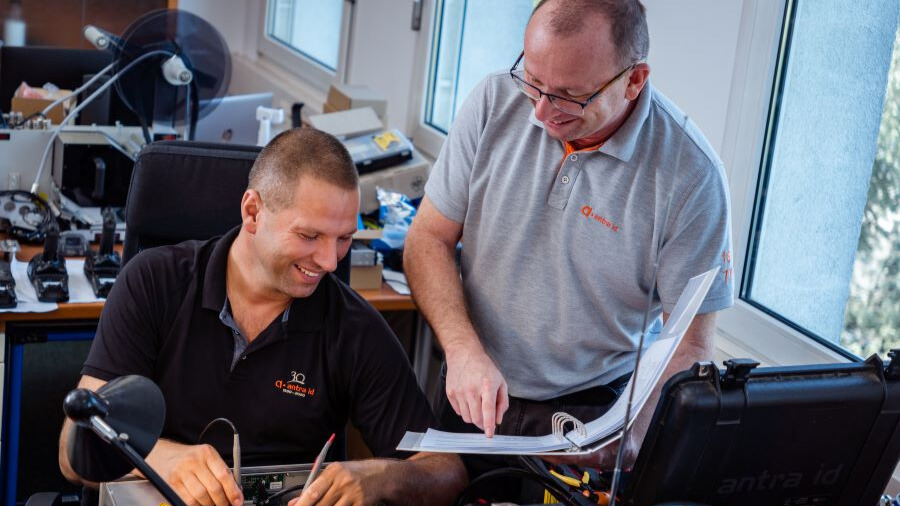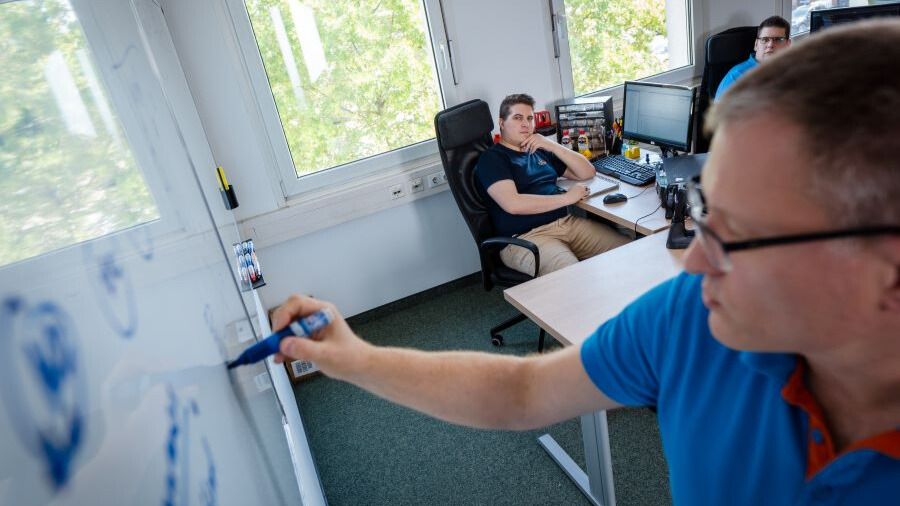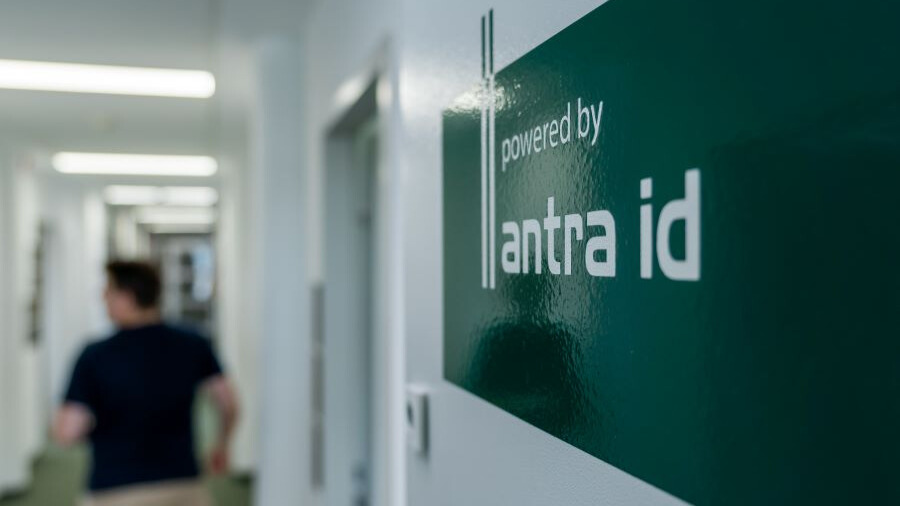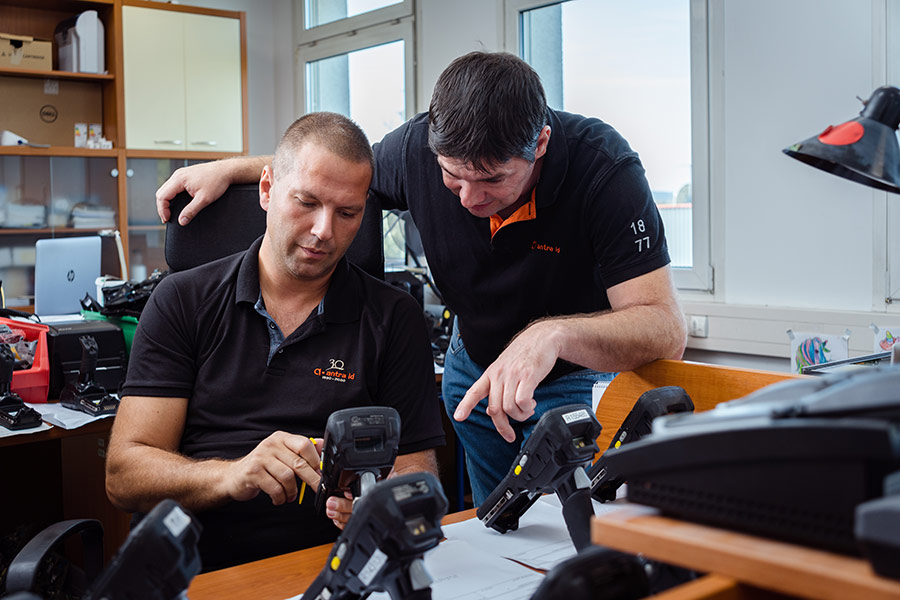The internal logistics of industrial companies can be a success story of automation, and signs of this are already starting to show in Hungary. Collaborative robots in the in-plant material flow. How is Audi Hungaria doing it?
One of the most spectacular technological breakthroughs is the autonomous mobile robots (AMR), which shortly will be able to handle material flows within the plant without human intervention. And with a professional system integrator, this can already be done now. Antra ID Ltd. has been a contracted partner of Audi Hungaria in Győr since 1999, and the initial contract for the supply and maintenance of marker tags has now evolved into a much more comprehensive and diversified range of tasks. “We manage the top-level IT system for mobile devices and a large part of the car manufacturer’s AMR fleet,” notes technical support engineer György Podolák. – These contracts are recent, having been renewed recently. Our strengths are our experience and flexibility – anything big and complex is good news for us because it makes hiring us all the more worthwhile.”

How can I help? Material flow based on mobile robots
The shortage of skilled labor is felt at all levels, and customers want to automate as much of their manufacturing processes as possible. Antra, part of Central European Automation Holding, operates four AMR systems at Audi Hungaria in Győr. One is a single vehicle that does almost nothing but transfer the finished and block-stored products to another production zone.
Another system comprises three units that feed products to the production line. The third fleet they manage consists of 22 units, which are now responsible for servicing an entire production line. Some unloading is done automatically, others by the staff. The fleet is SAP connected, so all tasks are started and completed.
These three fleets have been taken over by Antra, which means that they do the day-to-day work, but they must refrain from interfering with the software. “It’s not just a matter of lubricating and tightening the screws because the fault can be in the machine itself, or the network, the fleet manager, the ERP system connected to it,” explained György Podolák.
The fourth fleet is even more complex, as the robots also had to be linked to a positioning system, which is not entirely closed, as in many places, the cars are moved manually. This is because the products are moved along a congested route where the customer has yet to allow the AMRs to go. Once the manual movement is complete, the position of the trolley must be determined, and the AMR can decide accordingly whether it has a current task for that trolley.
“We could have installed sensors in all positions, but that would have involved too much cabling and would have resulted in a rather inflexible system,” said György Podolák, “Instead, we built a positioning system in cooperation with the Czech company SEWIO; which has an accuracy of 30 cm. This is sufficient for 1.5 × 1-meter trolleys; the system can report to AMR whether there is a trolley in the storage point and, if so, what is inside.”

The UWB radio technology standard used allows fast communication and low noise. The transmitter mounted on the trolleys emits intermittent signals – more frequently during movement – picked up and transmitted by receivers mounted on the ceiling at roughly 20-meter intervals. This allows an instant inventory of where the trolleys are and with which products. This is integrated into the production process to such an extent that a stoppage of the AMRs would cause a significant headache for the logistics staff. If all goes well, another fleet of AMRs will start operating at the plant in 2023.
Learning process leading to the factory of the future
The robots used in Győr are AMRs, which means they do not follow a specific route but use laser scanners to scan the environment around them and navigate accordingly. Accordingly, they could avoid obstacles autonomously, but this option is not used in production – not only because of the time lost but also because of the risk of accidents.
However, production lines change frequently enough that using a more straightforward automatic guided vehicle (AGV) system will eventually cause serious disadvantages. Indeed, following a fixed route would make material handling inflexible or lead to dense rearrangements for new courses. With AMRs, however, changing the way can be set with just a few clicks. In real-time, you can see what each robot is seeing around you, or where it is going from where and what it is transporting. Otherwise, building an AMR-based material handling system is a quick and easy task on paper. “If you start designing and building it together with the production line, you need to know that any changes made on the production line afterward will practically wipe out the work done with the fleet manager up to that point,” says György Podolák.
– Subsequent operations are more accessible, but not without problems: most of the error messages are not because there is something wrong with the AMR – there rarely is – but because there are obstacles in the way of the task, such as it cannot pick up or unload the load, it has not been placed in the right place, it has not arrived, or the destination is not empty. It’s a learning process for both the customer and the operator; it may not all work well straight away, but it’s future, and if we don’t go down that road, we won’t be able to design, build and operate an efficient system later on.”



